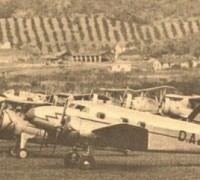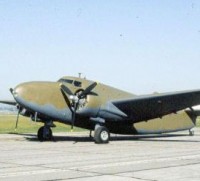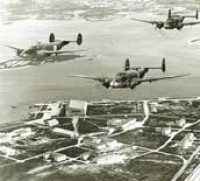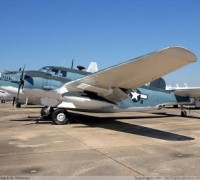BRAZILIAN AIR FORCE FAB * - BRAZILIAN AIR FORCE
17)LOCKHEED A 28 A HUDSON
Total received: 28
General characteristics
Crew: 6
Length: 44 ft 4 in (13.51 m)
Wingspan: 65 ft 6 in (19.96 m)
Height: 11 ft 10 in (3.62 m)
Wing area: 551 ft² (51.2 m²)
Empty weight: 12,000 lb (5,400 kg)
Loaded weight: 17,500 lb (7,930 kg)
Max takeoff weight: 18,500 lb (8,390 kg)
Powerplant: 2× Wright Cyclone 9-cylinder radial engines, 1,100 hp (820 kW) each
Performance:
Maximum speed: 218 kt (246 mph, 397 km/h)
Range: 1,700 nm (1,960 mi, 3,150 km)
Service ceiling: 24,500 ft (7,470 m)
Rate of climb: 1,200 ft/min (6.2 m/s)
Wing loading: lb/ft² (kg/m²) Power/mass: hp/lb (kW/kg)
Armament:
Guns: 4× .303 in (7.7 mm) Browning machine guns 2× in nose 2× in dorsal turret
Bombs: 750 lb (340 kg) of bombs or depth charges
With the entry of Brazil to the allied effort in the Second World War, an agreement with the United States government provided for the re-equipping of the newly created Brazilian Air Force, under the Leading Lease Act, in this package of military assistance to FAB would receive 28 Lockheed A-28A Hudson, being these aircraft flown to Brazil by American pilots, with the first 10 units arriving between November and December 1942 and the remaining between February and March of the following year.
The first unit to receive the model was the Twin engine Aircraft Group (GAB) that was established in Natal in Rio Grande do Norte, thus starting its operational career, attending maritime patrolling missions to protect convoys, the next unit to receive the Hudson was the Salvador Air Base that received an endowment of 7 aircraft. Also the 2nd Medium Bombing Group (2ºGBM) was activated in Salvador (BA) on August 17, 1944 to fulfill missions of coverage of Convoys, antisubmarine and bombing, would be endowed with 5 units of the model.
Throughout the conflict, the Hudson A-28A were also operated by the 4th Medium Bombardment Group (4ºGBM), which inherited the aircraft of the 2nd MGM, the Fortaleza Air Base, the Galeão Flying Unit, the 3rd Medium Bombardment Group Of Aircraft of the 6th RAv (GAB-6ºRAv), 1st Medium Bombardment Group (1ºGBM), Canoas Air Base and Santa Cruz Air Base.
During the patrol missions, two units of the A-28A fought fierce fighting with German submarines, the first of which occurred on April 5, 1943, when the Hudson FAB 75 (414-7175) at Salvador Bahia attacked with four depth charges a German submarine in the coast of Sergipe, some 60 km of Aracaju, without having the confirmation of sinking, but with records of an enormous oil patch in the area where the charges exploded. The second action occurred on July 31 of the same year, when the Hudson FAB 73 (414-7173) belonging to the Galeão Air Base Unit participated in the attack that culminated in the sinking of the German submarine U-199.
After the end of the conflict, according to the new system of reorganization of the Brazilian Air Force, 10 remaining aircrafts in better conditions were gathered in the 4th Medium Bombing Group (4ºGBM), based at Fortaleza Air Force Base, in order to facilitate and standardize both operation and maintenance. On July 29, 1947, this unit would be converted into the 1st / 4th Aviation Group (1º / 4º GAv), from May 26, 1948 the group would also operate the recently received B-25J Mitchel. Identified structural problems that would condemn many cells, the three units in the best state were converted to cargo transport where they received the designation of C-28 operating from Fortaleza Air Base in the accomplishment of administrative missions. On July 18, 1955, the FAB 2900, the last aircraft in operation was deactivated, thus ending its career in Brazil.
Translated from http://www.armasnacionais.com
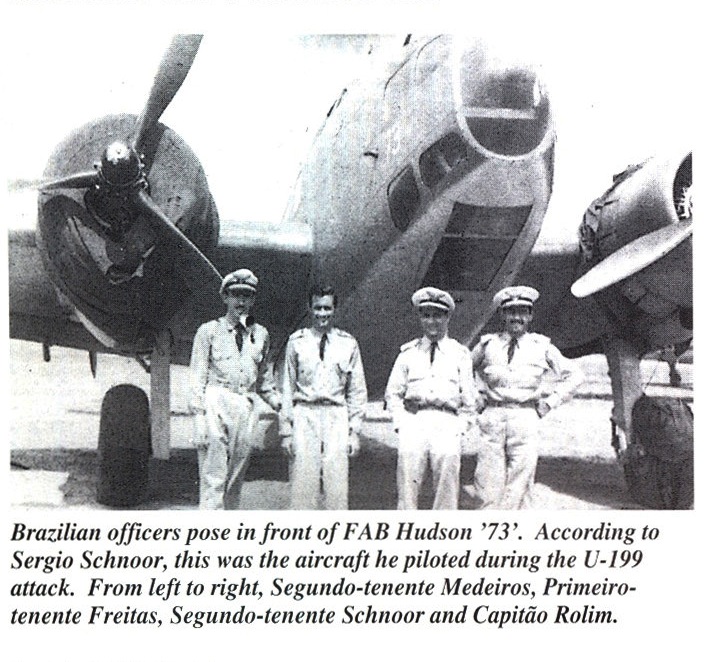
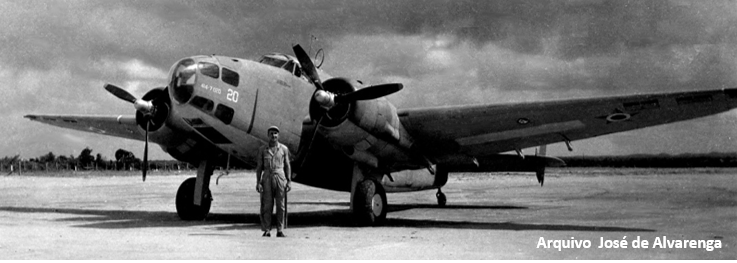
Above one A 28 seen in one Brazilian airbase in Northeastern coast. Photo https://veiculosearmamentosmilitares.blogspot.com/2018/01/lockheed-28-hudson.html
FOLLOWING PAGES ON THE SAME ARTICLE


